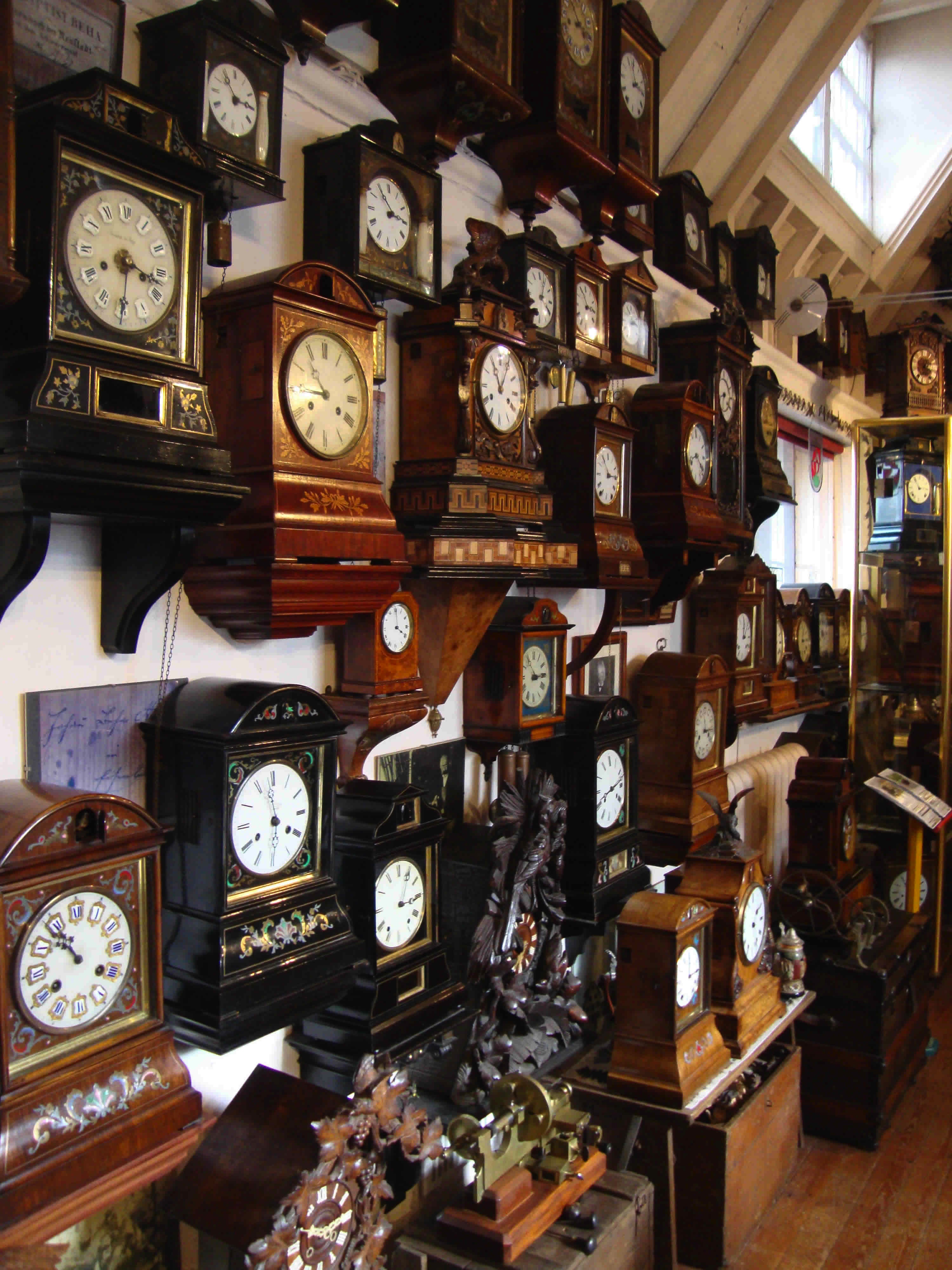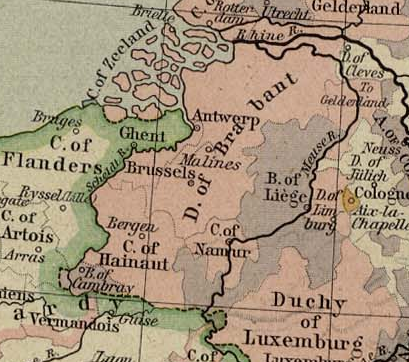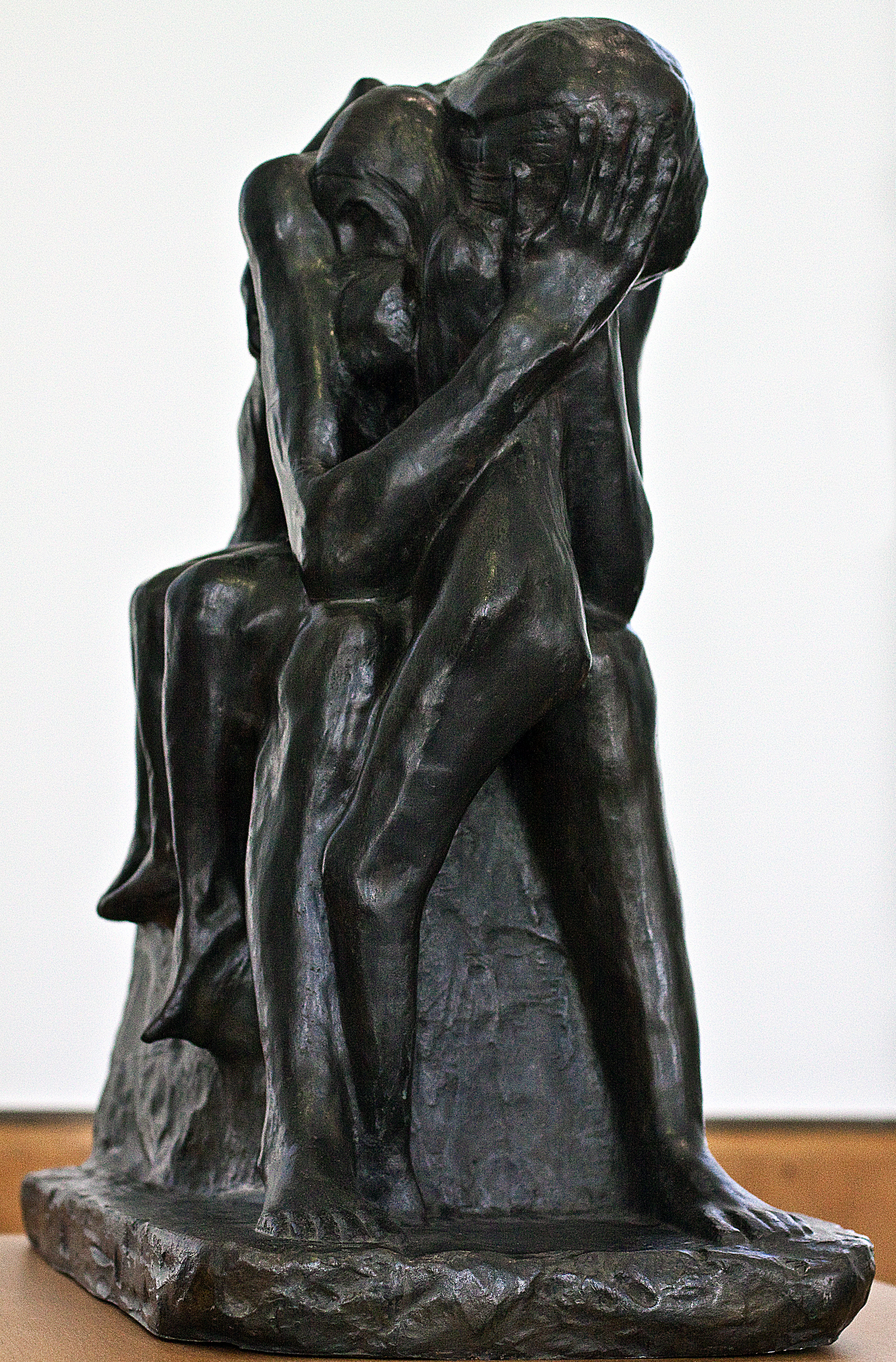|
M – Museum Leuven
M – Museum Leuven or simply M is an art museum in the inner city of Leuven, Belgium, which was officially opened in 2009. The museum has a collection of some 46,000 works, which range from late-Gothic paintings and sculptures to 16th century local artists such as Jan Rombouts the Elder and Josse van der Baren to 19th-century paintings and sculptures by various Flemish masters including Constantin Meunier, Jef Lambeaux and George Minne. History M – Museum Leuven continues the municipal museum operations that started in the early 19th century. In 1823, the first museum was founded on the second floor of the Leuven City Hall. About one century later, the collection was moved to the former private residence of the mayor Leopold Vander Kelen in the historic center of Leuven. This location is now the principal exhibition space of M Museum. Before it was opened in 2009, the M Museum building was renovated after a design by Belgian architect Stéphane Beel. The design integrates hi ... [...More Info...] [...Related Items...] OR: [Wikipedia] [Google] [Baidu] |
Art Collection
A museum is distinguished by a collection of often unique objects that forms the core of its activities for exhibitions, education, research, etc. This differentiates it from an archive or library, where the contents may be more paper-based, replaceable and less exhibition oriented, or a private collection of art formed by an individual, family or institution that may grant no public access. A museum normally has a collecting policy for new acquisitions, so only objects in certain categories and of a certain quality are accepted into the collection. The process by which an object is formally included in the collection is called ''accessioning'' and each object is given a unique accession number. Museum collections, and archives in general, are normally catalogued in a collection catalogue, traditionally in a card index, but nowadays in a computerized database. Transferring collection catalogues onto computer-based media is a major undertaking for most museums. All new acquisiti ... [...More Info...] [...Related Items...] OR: [Wikipedia] [Google] [Baidu] |
Museums In Leuven
A museum ( ; plural museums or, rarely, musea) is a building or institution that cares for and displays a collection of artifacts and other objects of artistic, cultural, historical, or scientific importance. Many public museums make these items available for public viewing through exhibits that may be permanent or temporary. The largest museums are located in major cities throughout the world, while thousands of local museums exist in smaller cities, towns, and rural areas. Museums have varying aims, ranging from the conservation and documentation of their collection, serving researchers and specialists, to catering to the general public. The goal of serving researchers is not only scientific, but intended to serve the general public. There are many types of museums, including art museums, natural history museums, science museums, war museums, and children's museums. According to the International Council of Museums (ICOM), there are more than 55,000 museums in 202 count ... [...More Info...] [...Related Items...] OR: [Wikipedia] [Google] [Baidu] |
Art Museums And Galleries In Belgium
Art is a diverse range of human activity, and resulting product, that involves creative or imaginative talent expressive of technical proficiency, beauty, emotional power, or conceptual ideas. There is no generally agreed definition of what constitutes art, and its interpretation has varied greatly throughout history and across cultures. In the Western tradition, the three classical branches of visual art are painting, sculpture, and architecture. Theatre, dance, and other performing arts, as well as literature, music, film and other media such as interactive media, are included in a broader definition of the arts. Until the 17th century, ''art'' referred to any skill or mastery and was not differentiated from crafts or sciences. In modern usage after the 17th century, where aesthetic considerations are paramount, the fine arts are separated and distinguished from acquired skills in general, such as the decorative or applied arts. The nature of art and related concepts, ... [...More Info...] [...Related Items...] OR: [Wikipedia] [Google] [Baidu] |
Museums Established In 2009
A museum ( ; plural museums or, rarely, musea) is a building or institution that cares for and displays a collection of artifacts and other objects of artistic, cultural, historical, or scientific importance. Many public museums make these items available for public viewing through exhibits that may be permanent or temporary. The largest museums are located in major cities throughout the world, while thousands of local museums exist in smaller cities, towns, and rural areas. Museums have varying aims, ranging from the conservation and documentation of their collection, serving researchers and specialists, to catering to the general public. The goal of serving researchers is not only scientific, but intended to serve the general public. There are many types of museums, including art museums, natural history museums, science museums, war museums, and children's museums. According to the International Council of Museums (ICOM), there are more than 55,000 museums in 202 co ... [...More Info...] [...Related Items...] OR: [Wikipedia] [Google] [Baidu] |
2009 Establishments In Belgium
9 (nine) is the natural number following and preceding . Evolution of the Arabic digit In the beginning, various Indians wrote a digit 9 similar in shape to the modern closing question mark without the bottom dot. The Kshatrapa, Andhra and Gupta started curving the bottom vertical line coming up with a -look-alike. The Nagari continued the bottom stroke to make a circle and enclose the 3-look-alike, in much the same way that the sign @ encircles a lowercase ''a''. As time went on, the enclosing circle became bigger and its line continued beyond the circle downwards, as the 3-look-alike became smaller. Soon, all that was left of the 3-look-alike was a squiggle. The Arabs simply connected that squiggle to the downward stroke at the middle and subsequent European change was purely cosmetic. While the shape of the glyph for the digit 9 has an ascender in most modern typefaces, in typefaces with text figures the character usually has a descender, as, for example, in . The mo ... [...More Info...] [...Related Items...] OR: [Wikipedia] [Google] [Baidu] |
Rogier Van Der Weyden
Rogier van der Weyden () or Roger de la Pasture (1399 or 140018 June 1464) was an Early Netherlandish painting, early Netherlandish painter whose surviving works consist mainly of religious triptychs, altarpieces, and commissioned single and diptych portraits. He was highly successful in his lifetime; his paintings were exported to Italy and Spain, and he received commissions from, amongst others, Philip the Good, Netherlandish nobility, and foreign princes. By the latter half of the 15th century, he had eclipsed Jan van Eyck in popularity. However his fame lasted only until the 17th century, and largely due to changing taste, he was almost totally forgotten by the mid-18th century. His reputation was slowly rebuilt during the following 200 years; today he is known, with Robert Campin and van Eyck, as the third (by birth date) of the three great Early Flemish artists (''Vlaamse Primitieven'' or "Flemish Primitives"), and widely as the most influential Northern painter of the 15th ... [...More Info...] [...Related Items...] OR: [Wikipedia] [Google] [Baidu] |
Dirk Bouts
Dieric Bouts (born c. 1415 – 6 May 1475) was an Early Netherlandish painter. Bouts may have studied under Rogier van der Weyden, and his work was influenced by van der Weyden and Jan van Eyck. He worked in Leuven from 1457 (or possibly earlier) until his death in 1475. Bouts was among the first northern painters to demonstrate the use of a single vanishing point (as illustrated in his ''Last Supper''). Works Early works (before 1464) Bouts's earliest work is the '' Triptych of the Virgin's Life'' in the Prado (Madrid), dated to about 1445. The ''Deposition Altarpiece'' in Granada (Capilla Real) probably also dates to this period, around 1450–1460. A dismembered canvas altarpiece—now in the Royal Museums of Fine Arts of Belgium (Brussels), the J. Paul Getty Museum (Los Angeles), National Gallery (London), Norton Simon Museum (Pasadena), and a Swiss private collection—with the same dimensions as the ''Altarpiece of the Holy Sacrament'' may belong to this period. Th ... [...More Info...] [...Related Items...] OR: [Wikipedia] [Google] [Baidu] |
Duchy Of Brabant
The Duchy of Brabant was a State of the Holy Roman Empire established in 1183. It developed from the Landgraviate of Brabant and formed the heart of the historic Low Countries, part of the Burgundian Netherlands from 1430 and of the Habsburg Netherlands from 1482, until it was partitioned after the Dutch revolt. Present-day North Brabant (''Noord-Brabant'') was ceded to the Generality Lands of the Dutch Republic according to the 1648 Peace of Westphalia, while the reduced duchy remained part of the Habsburg Netherlands until it was conquered by French Revolutionary forces in 1794, which was recognized by treaty in 1797. Today all the duchy's former territories, apart from exclaves, are in Belgium except for the Dutch province of North Brabant. Geography The Duchy of Brabant (adjective: '' Brabantian'' or '' Brabantine'') was historically divided into four parts, each with its own capital. The four capitals were Leuven, Brussels, Antwerp and 's-Hertogenbosch. Before ' ... [...More Info...] [...Related Items...] OR: [Wikipedia] [Google] [Baidu] |
The Liberation Of Saint Peter (left) And Saint Margaret Of Antioch (right), By Jan Rombouts I, C
''The'' () is a grammatical article in English, denoting persons or things that are already or about to be mentioned, under discussion, implied or otherwise presumed familiar to listeners, readers, or speakers. It is the definite article in English. ''The'' is the most frequently used word in the English language; studies and analyses of texts have found it to account for seven percent of all printed English-language words. It is derived from gendered articles in Old English which combined in Middle English and now has a single form used with nouns of any gender. The word can be used with both singular and plural nouns, and with a noun that starts with any letter. This is different from many other languages, which have different forms of the definite article for different genders or numbers. Pronunciation In most dialects, "the" is pronounced as (with the voiced dental fricative followed by a schwa) when followed by a consonant sound, and as (homophone of the archaic pr ... [...More Info...] [...Related Items...] OR: [Wikipedia] [Google] [Baidu] |
Art Museum
An art museum or art gallery is a building or space for the display of art, usually from the museum's own Collection (artwork), collection. It might be in public or private ownership and may be accessible to all or have restrictions in place. Although primarily concerned with Visual arts, visual art, art museums are often used as a venue for other cultural exchanges and artistic activities, such as lectures, performance arts, music concerts, or poetry readings. Art museums also frequently host themed temporary exhibitions, which often include items on loan from other collections. Terminology An institution dedicated to the display of art can be called an art museum or an art gallery, and the two terms may be used interchangeably. This is reflected in the names of institutions around the world, some of which are called galleries (e.g. the National Gallery and Neue Nationalgalerie), and some of which are called museums (including the Metropolitan Museum of Art, the Museum of M ... [...More Info...] [...Related Items...] OR: [Wikipedia] [Google] [Baidu] |
George Minne
George (Georges) Minne (born ''Georgius Joannes Leonardus Minne''; 30 August 1866 – 18 February 1941) was a Belgian artist and sculptor famous for his idealized depictions of man's inner spiritual conflicts, including the "Kneeling Youth" sculpture series. A contemporary of Gustav Klimt and Egon Schiele, Minne's work shows many similarities in both form and subject matter to the Viennese Secessionists, the fathers of Art Nouveau. Life He was born in Ghent, Belgium as the son of an architect (Fredericus Augustus Minne). In 1879, Minne studied painting at the Royal Academy of Fine Arts in Ghent, then in the Académie Royale des Beaux-Arts in Brussels from 1885 through 1889. In 1891 he was elected a member of the arts group Les XX.Price, Renée. ''New Worlds: German and Austrian Art 1890-1940'', New York: Neue Galerie, 2001. He had made his first visit to Paris in 1886 where he met the writers Maurice Maeterlinck and Gregore Le Roy, who introduced him to the French Symboli ... [...More Info...] [...Related Items...] OR: [Wikipedia] [Google] [Baidu] |


.jpg)


.png)

